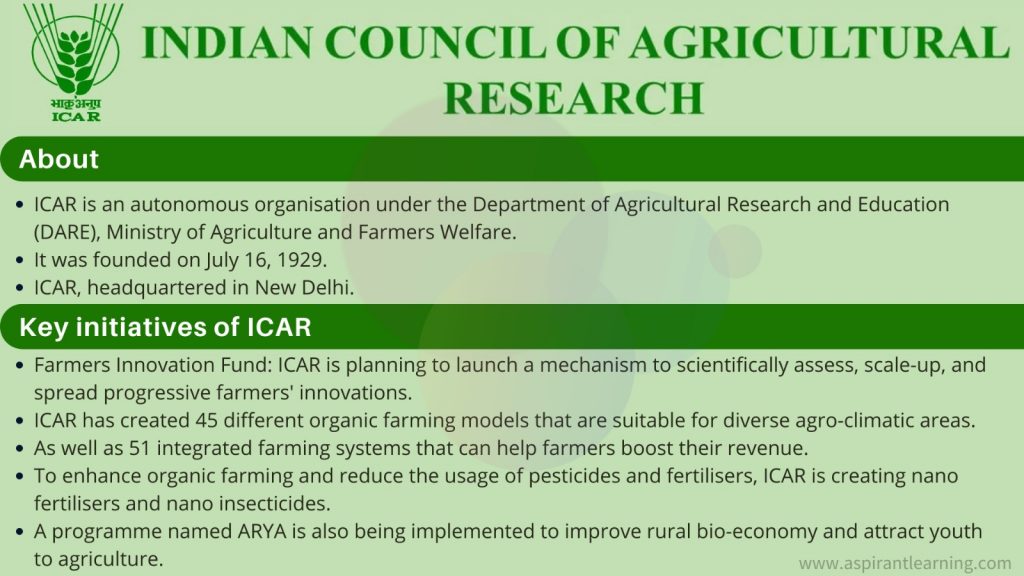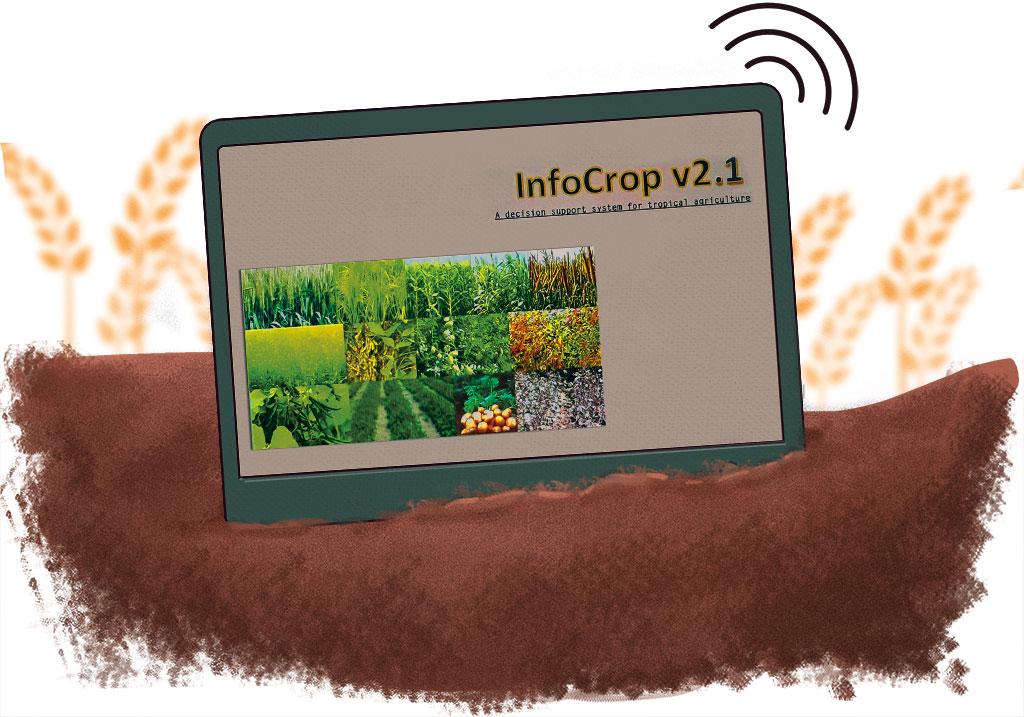News Highlight
As a heatwave spectre hangs again over India’s wheat harvest, its home-grown crop simulation model can help: InfoCrop v2.1.
Key Takeaway
- Scientists at the Indian Agricultural Research Institute (IARI) in Delhi carried out a first-of-its-kind experiment to assess the impact of hot weather on crop productivity in Punjab and Haryana.
InfoCrop v2.1
- About
- Firstly, it is the only dynamic crop simulation model in India.
- It was developed and released by Indian Agricultural Research Institute (IARI) in 2015.
- Its goal is to investigate the long-term effects of climate change and crop management strategies on production.
- It is a process-based dynamic (real-time) simulation model for calculating the yield growth of 11 crops.
- Paddy, wheat, maise, sorghum, pearl millet, pigeon pea, chickpea, soybean, peanut, potato, and cotton are the 11 crops.
- It also contains life cycle data for nearly all 11 local variations of those 11 crops.
- It gives daily and summary outputs on parameters including growth and yield, nitrogen uptake and balance, greenhouse gas emissions, and soil water.
- In addition, it performs better in tropical regions.
- Furthermore, InfoCrop version 1 was released in 2004, and version 2.1 was released in 2015.
How does it work?
- The parameters in InfoCrop are already calibrated to Indian crop types and are updated at regular intervals by the institute.
- The parameters address features of;
- Weather (precipitation, temperature, radiation and others).
- Crop growth (phenology, grain characteristics, leaf growth, temperature and flooding sensitivity and others).
- Soil (texture, organic carbon, water holding characteristics and pH levels).
- Pests and crop management (organic matter, fertiliser and irrigation).
Advantages of the Tool
- Prevent on-field corruption
- India now relies on field trials, which are costly and resource-intensive, as well as a highly corrupt practice.
- Crop insurance prediction
- To increase accuracy, governments and insurance firms can utilise this for climate effect estimations.
- As well as pre- or in-season agricultural yield forecasts.
- Assess crop loss
- In addition to forecasting, simulation models can assess crop loss following an extreme weather event.
- It can then be used to provide relief packages.
Indian Council for Agricultural Research (ICAR)
- Overview
- ICAR is an autonomous organisation within the Ministry of Agriculture and Farmers Welfare’s Department of Agricultural Research and Education (DARE).
- It was founded on July 16, 1929.
- In addition, ICAR stands for Imperial Council of Agricultural Research.
- ICAR, headquartered in New Delhi, operates 101 institutes and 71 agricultural universities.
- The Indian Council of Agricultural Research is the country’s primary agency for coordinating, supervising, and managing agricultural research and education, encompassing horticulture, fisheries, and animal sciences.
- The Union Minister of Agriculture is the ICAR Society’s ex-officio President.
- Furthermore, the ‘ICAR Vision 2050’ provides the strategic framework for the country’s equitable and sustainable agricultural growth through innovation.

Pic Courtesy: Down to Earth
Content Source: Down to Earth



